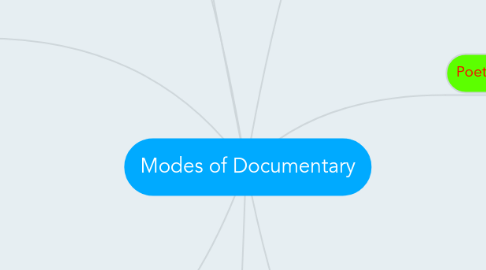Modes of Documentary
par Connor Clark


1. Observational
1.1. This mode uses the observations of an unobtrusive camera to create direct engagement with the everyday life of subjects.
1.2. Location shooting using hand-held cameras
1.3. Long takes dominate
1.4. Synchronous (direct) sound recording
1.5. No voiceover
1.6. No Interviews
1.7. Documentary makers presence is hidden
1.8. Subjects pretend that they are not being filmed
2. Participatory
2.1. This mode emphasises the interaction between filmmaker and subjects. These films usually take the form of a series of interviews or other forms of even more direct involvement from conversations to provocations. Archival footage to examine historical issues is also included.
2.2. Documentary maker and crew interacts with the subject
2.3. Interviews dominate but tends to be informal ‘on the run’ questioning
2.4. Use of archive material- Stills, news footage, newspaper headlines, letters etc.
2.5. Location shooting: hand-held camera
3. Performative
3.1. This mode highlights the subjective or expressive aspect of the filmmaker’s own involvement with a subject to heighten the audience’s responsiveness to the subject and to this involvement. These films reject objectivity and favour emotion.
3.2. Documentary film maker interacts with subject on the screen
3.3. Documenter makes frequent comments about what is happening
3.4. Stresses the emotional complexity of the experience from the perspective of the filmmaker
4. Codes and Conventions of Documentaries
4.1. Actuality footage — This may be a recoding of an actual event which is documented with the real people involved and not actors
4.2. Voiceover — Unseen commentator who explains or tells a story during the documentary, as an audience we are encouraged to believe what they say and claim it as the truth
4.3. Narrativisation — To communicate (events or experiences) in narrative form, in order to better understand them
4.4. Interview — This allows people being filmed to speak directly about events prompted by specific questions. Interviews in a documentary give viewers a sense of realism. Interviewees generally answer questions looking at the interviewer, this is done to gain emotion, it is proven that someone will give far more emotion looking into the eye of someone rather than looking into a camera
5. Bill Nichols
5.1. Born 1942
5.2. American film critic and theorist
5.3. Nichols is known for being a pioneer in documentary theory
5.4. Nichols has also worked as a lecturer, spoken at film festivals and works regularly on the set of films
5.5. Nichols developed the idea of the six modes of documentaries, categorising them by their codes and conventions
5.5.1. Although Nichols developed these six modes of documentary, he also stated that these modes are not exclusive and that the modes can blur
5.5.2. Whilst there is usually one dominate style or mode, elements of one or more other modes can be included
5.5.3. This allows for documentaries to be more unique and engaging for the audience
5.5.4. In some cases the blurring of modes allows for more information, a stronger argument and a more interesting documentary
